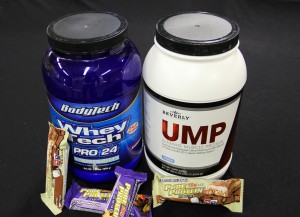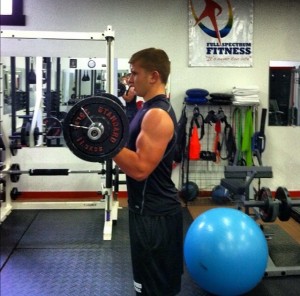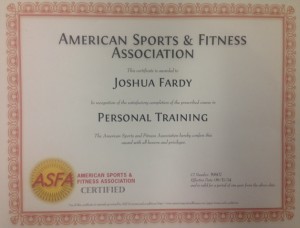The easier it becomes to exchange information, the more low-quality information,  or “noise”, we will have to sort through. This is just a fact of life. One place where there is a lot of noise is the bodybuilding supplement marketplace. For instance, advertisers frequently “hype up” their products by implying that they are capable of producing effects that they are not. Such tactics don’t just hurt the consumers of these products; they also tarnish the supplement industry as a whole.
or “noise”, we will have to sort through. This is just a fact of life. One place where there is a lot of noise is the bodybuilding supplement marketplace. For instance, advertisers frequently “hype up” their products by implying that they are capable of producing effects that they are not. Such tactics don’t just hurt the consumers of these products; they also tarnish the supplement industry as a whole.
This article is intended to serve as a “noise-free” haven where you can learn almost everything you need to know to purchase a high-quality protein powder.
What do Proteins do for My Muscles?
Building muscle -“bodybuilding”- ultimately comes down to protein synthesis. Every cell in your body contains protein. Myofibrillar proteins are of particular interest to bodybuilders and athletes of all kinds. There are two reasons for this. First, myofibrillar proteins enable your skeletal muscle cells to produce force; they are literally the machines of muscle contraction, or shortening. Second, the more myofibrillar protein your muscle cells accumulate, the bigger and stronger your muscles will tend to be.
In order to accumulate myofibrillar protein, or even just maintain its current level, your muscle cells must synthesize it. There are essentially 3 ways that you can stimulate this process:
- You can perform resistance exercise.
- You can eat.
- You can rely on growth hormones.
All of us use the second and third methods, whether we are aware of it or not. We have to eat to live. When we eat protein, in particular, this stimulates protein synthesis and suppresses protein breakdown. In healthy individuals, the end result is that you merely maintain your existing muscle mass (though your ability to do so seems to deteriorate with age). In other words, your muscles don’t get bigger and stronger each time you eat a protein-containing meal. If only it were that easy!
Our bodies naturally produce a number of growth hormones (e.g. testosterone, insulin and GH), all of which play important roles in facilitating protein synthesis, to varying degrees. When we are young, this orchestra of hormones is loud enough to permit actual increases in muscle size and strength without us having to go to the gym and lift weights. As we get older, however, our hormone levels tend to weaken and this is no longer the case; it is a struggle just to maintain our existing muscle mass, let alone increase it. One way around this is to artificially raise your growth hormone levels, such as by injecting testosterone or analogues thereof (i.e. anabolic-androgenic steroids). If they are raised high enough, then your muscle mass may increase markedly, particularly if you are performing resistance exercise. Unfortunately, administering growth hormones brings with it all kinds of undesirable “side” effects, many of them inherently unavoidable.
The first method, resistance exercise, is by far the safest and most potent means of stimulating myofibrillar protein synthesis. So potent is it, in fact, that it can actually produce increases in muscle size and strength in mature adults. This is why it is the mainstay of bodybuilding training. Yet despite its potency, many thousands of people perform resistance exercise every day and fail to see satisfying results.
Protein begets protein
Your workouts are only as good as your diet, of course. (Genes also play a big role.) If you fail to provide your body with sufficient nutrients, then your muscles won’t get any bigger or stronger. Protein is generally regarded by scientists as the most potent nutrient with which to stimulate myofibrillar protein synthesis. This makes sense: The protein you eat is largely digested into amino acids before being absorbed. The amino acids subsequently circulate in the bloodstream until they reach your muscle cells, where they are absorbed and used to synthesize protein. Thus, (dietary) protein begets (muscle) protein.
As you might expect, some dietary proteins are considered better than others. Muscle cells require many different amino acids in order to synthesize protein. Some dietary proteins contain plenty of these amino acids, whereas others fall short in one way or another. Some proteins are digested and absorbed quickly, whereas others take a bit more time…and so on.
Of all the whole-food dietary sources of protein investigated to date, the most potent muscle builders are considered to be milk and egg. As you might expect, digesting and absorbing the protein supplied by a glass of milk or a plate of scrambled eggs poses a different challenge to your body than does a serving of concentrated whey (derived from milk) or egg protein powder, for instance. The protein in whole foods is housed in a labyrinth of carbohydrates, fats, minerals and other nutrients, and sometimes even “anti-nutrients”. This effectively slows down the process of digestion and absorption. The protein in a protein powder, in contrast, has been largely extracted from the framework of the original whole food source. It can therefore be more quickly converted into muscle protein. At the risk of oversimplifying, this explains to a large extent why protein powders can be much more potent muscle builders than whole foods, not to mention the far-reaching benefits of convenience.
Having been freed from the framework of their respective whole food sources, powdered proteins can be digested and absorbed and begin stimulating muscle protein synthesis and inhibiting muscle protein breakdown virtually immediately.
Making Protein Powders In a nutshell
Protein doesn’t taste very good on its own, so protein supplement manufacturers put much effort into trying to improve the taste or mouthfeel of the product. It is a lengthy process of trial and error.
There are 6 main types of proteins that go into the various bars and powders available on the market today:
Whey Protein Isolate (WPI): Cow’s milk contains about 0.8% whey, much less than casein (2.6%), the other major milk protein. WPI is the purest (>90%) and most expensive whey protein extract available. It is naturally rich in dietarily essential amino acids, of which the branched-chain amino acids make up nearly 50%.
Whey Protein Hydrolysate (WPH): To WPH, WPI is partially digested, or hydrolyzed, with the help of enzymes. The enzyme treatment is mild and carefully monitored so as to ensure that the amino acids remain intact. Because it has been partially digested, WPH’s amino acids have the potential to be absorbed more quickly. In this sense, you can think of it as a “high-speed” form of whey.
Whey Protein Concentrate (WPC): WPC contains less protein per gram than does WPI. However, it can add an important taste and texture making it a more satisfying user experience.
Calcium Caseinate : Casein is by far the most abundant protein in milk, where it is naturally bound to calcium. It tends to be digested and absorbed somewhat more slowly than whey; a property which scientists have suggested allows it to more effectively suppress muscle protein breakdown.
Hydrolyzed Lactalbumin: Whey protein can be divided into different “fractions”. Lactalbumin is the second most abundant whey protein fraction in cow’s milk. It has been found to raise tryptophan levels in human subjects, probably because it is rich in this amino acid. Lactalbumin has also been shown to improve cognitive performance.
Egg White: When Heflin invented the original Muscle Provider formula, egg was considered the best available protein. WPC was just emerging in the nutritional supplement marketplace and ion-exchanged whey was considered the “cutting edge”. Why is egg white still in the Muscle Provider formula? We tackle this question below.
Why a “multi-species” protein powder?
Depending on the yardstick by which you measure it, whey protein –WPI, in particular– is currently regarded as even better quality than egg; it’s the new “gold standard”. So why not use WPI by itself? Why bother combining it with egg white and other proteins?
Heflin believed that a “multi-species” protein powder would give consumers a superior amino acid profile for muscle-building purposes. He wanted to extend Muscle Provider’s benefits beyond the ultra-fast amino acid nitrogen “hits” provided by WPI and WPH. Like every other protein in the formula, egg white has its own unique amino acid profile, speed of digestion and absorption, as well as taste and texture. It is the synergistic culmination of these factors that make Muscle Provider “just awesome”, in the words of the MP lab president. He tells us that you could certainly manufacture a protein powder consisting only of WPI. It wouldn’t necessarily cost much more. However, the other proteins in Muscle Provider add tremendous value, including taste, mouthfeel and other abstract qualities, plus the complementary amino acid, digestion and absorption profiles just mentioned. He adds “The combination and proportions of proteins in this product are entirely unique. They provide the greatest mouthfeel and the best taste with no undesirable aftertaste at all. They really go well together. Also, most products at this serving size do not contain as much protein.”
Where do the proteins come from?
With the exception of egg white, proteins powder and bar supplements come from fresh milk generously supplied by cows born and raised in the United States. The milk is briefly heated at a minimum temperature of 75 degrees to prevent the proteins from becoming damaged.
Flavoring protein can be difficult, as it taste pretty bland by itself. As mentioned earlier, whey, in particular, presents some serious taste issues. In short, flavors and sweeteners are necessary if you want to give consumers a product that they will find to be satisfactory. If a supplement company doesn’t want to spend a lot of money, then developing a great-tasting protein powder will be difficult if not impossible.
Blending the proteins
How you mix the individual proteins together –blending- is one that many facets that can greatly affect the taste and texture of the product. To create a fine grade product, the best method is to sift the ingredients through a fine screen prior to enter a blender. This helps to remove the lumps and otherwise ensure that the product is consistent, or “homogenous”.
Does quality really matter to your muscles?
High-quality ingredients and a refined manufacturing create the most optimal protein supplement products, and produce a noticeably different effect on muscle building than using a lower-quality, or lower-cost protein powder.
Higher-quality manufacturing methods yield proteins with superior bioavailability, for instance. This means that more of the protein can be absorbed by the body, and in some cases, more quickly. This directly impacts the anabolic state of your muscles. It’s important to note there are numerous qualities, or grades, of WPI, WPH, caseinate and other proteins.
Conclusion
It’s challenging to find high quality, good-tasting protein powders and bars that taste good. Factors that indicate a high-quality protein include the east with which it dissolves, is digested, how much sugar it contains, how many grams of proteins it has, and taste. The better the protein dissolves, the more easily it can be digested. If you have a peptide-bonded protein like that in meat, fish, or other whole foods, then your body has to use its digestive system to break it down and get at the protein. Ultimately, with a higher quality protein supplement, your body with taste, feel and see the difference. And, while high-quality protein supplements are typically higher in price, it’s a worthwhile investment in your current and future health. Beverly International UMP Protein Powder and Muscle Provider are superior protein products that greatly aid in muscle building and protection, and are now available for purchase in my online store, with convenient pick up at the gym.
 played running back and wide receiver, and was a varsity starter for two years. Josh achieved membership of the 1,000 club his senior year for the accomplishments of benching 295 lbs., squatting 535 lbs. and a hang clean of 255 lbs.; 85 lbs. over the benchmark! He is considered a leader on and off the field by his teammates who voted him offseason captain of the weight room, and football captain during his senior year.
played running back and wide receiver, and was a varsity starter for two years. Josh achieved membership of the 1,000 club his senior year for the accomplishments of benching 295 lbs., squatting 535 lbs. and a hang clean of 255 lbs.; 85 lbs. over the benchmark! He is considered a leader on and off the field by his teammates who voted him offseason captain of the weight room, and football captain during his senior year. received his personal trainer certification from the Aerobics and Fitness Association of America (AFAA), and successfully completed CPR training. After his first day on the job, Josh is receiving rave reviews here at Full Spectrum.
received his personal trainer certification from the Aerobics and Fitness Association of America (AFAA), and successfully completed CPR training. After his first day on the job, Josh is receiving rave reviews here at Full Spectrum.

